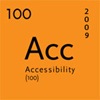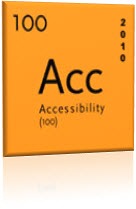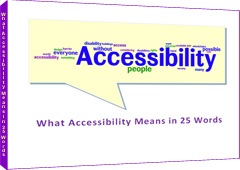
Yesterday, while exploring a website promoting an upcoming accessibility workshop, I read:
The physically challenged represent approximately twenty percent of the population, and this number is growing.
I was left wondering the physically challenged what? Horses? Cats? People? Which population? Of Mars?
Physically challenged, disabled and handicapped are not nouns; using them as such is grammatically incorrect and impedes comprehension.
Consider the follows three revised sentences:
Sentence #1: Correcting grammar and improving comprehension, the sentence could be rewritten to read:
Individuals with physical challenges represent approximately twenty percent of the Canadian population, and this number is growing.
Of course, sentence #1 assumes the Canadian population is being referenced.
Sentence #2: Assuming the 20% figure includes all disabilities, the following sentence would be more accurate:
People with disabilities represent approximately twenty percent of the Canadian population, and this number is growing.
Sentence #3: Alternatively, the sentence could be rewritten to read:
Canadians with disabilities represent approximately twenty percent of the population, and this number is growing.
By changing the word “people†to “Canadiansâ€, this segment of the population is given a sense of belonging and citizenry. After all, isn’t that what accessibility is all about?
Words can confuse or clarify, simplify or elaborate, demean or empower. Take care in how they are used; otherwise, readers may think you are talking about Martians with physical challenges!
Accessibility 100 is a series of 100 easy-to-implement, free and inexpensive tips for improving accessibility for people with disabilities. This is a community project. Feel free to leave your comments, questions and ideas for future Accessibility 100 posts.
Get the entire series by subscribing to this blog by filling in the form in the upper right corner or by subscribing to the RSS feed.
If you enjoyed this post, consider buying me a chai tea latte. Thanks kindly.
 Earlier this year I invited readers to share exactly 25 words on:
Earlier this year I invited readers to share exactly 25 words on: After a few amazing delays – like touching gold and zipping across Robson Square – I have finally compiled the responses into a free ebook â€What Accessibility Means in 25 Wordsâ€. Download the ebook and feel free to share widely. (You will need the free Adobe PDF Reader to view it.)
After a few amazing delays – like touching gold and zipping across Robson Square – I have finally compiled the responses into a free ebook â€What Accessibility Means in 25 Wordsâ€. Download the ebook and feel free to share widely. (You will need the free Adobe PDF Reader to view it.)

 Provide some seating for the weary shopper. Elderly customers and those with invisible health conditions are unable to walk long distances and must take short breaks.
Provide some seating for the weary shopper. Elderly customers and those with invisible health conditions are unable to walk long distances and must take short breaks.  Subscribe via RSS
Subscribe via RSS



